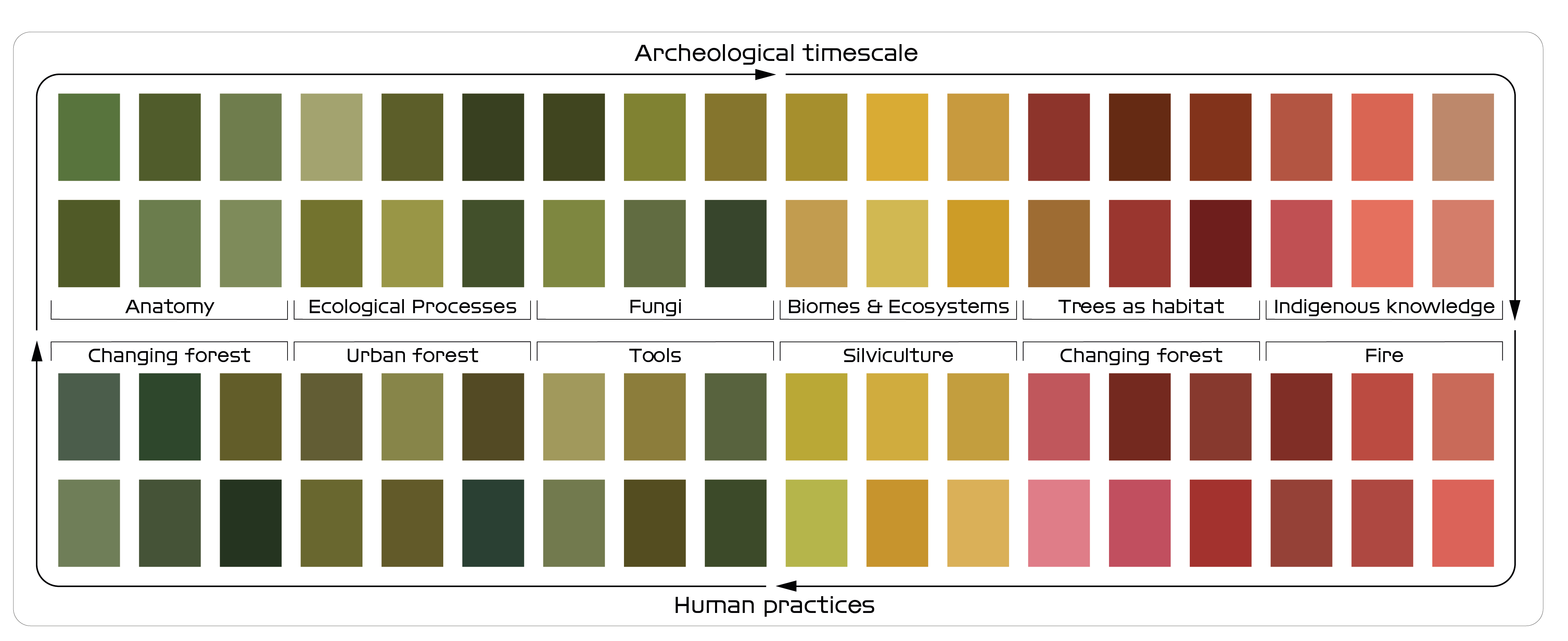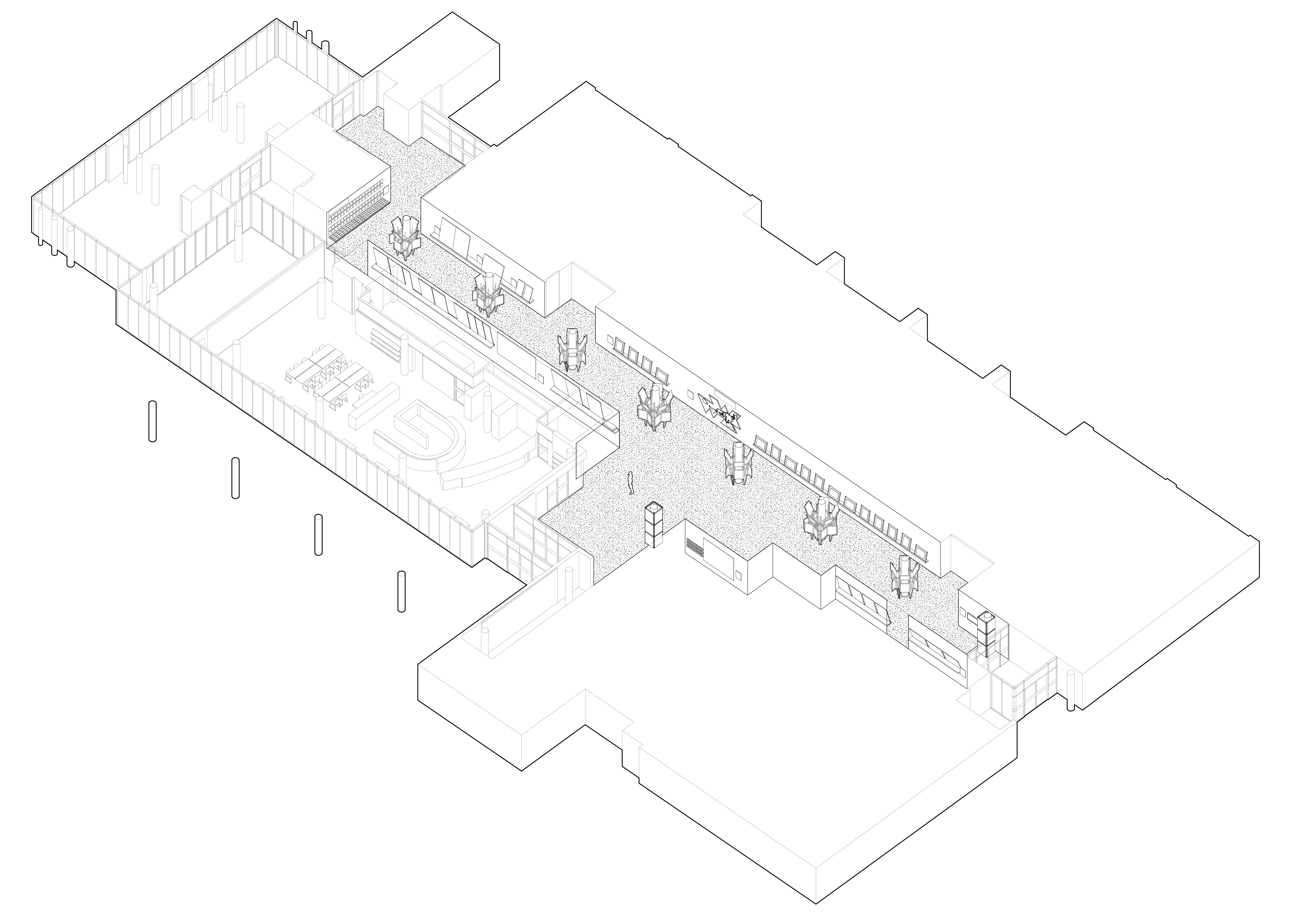











Cambridge, MA
2024
Instructor, Curation and Editor:
Anita Berrizbeitia
Editor Assistant:
Rosita Palladino
Curatorial, Assistant:
Manuel Bouzas
Team:
N. Boverman, H. Das, E. Dunnenberger, R. Gao, L. Garinois, A. Harvey, M. Lantigua, Y. Ji, A. Jones, A. Kupi, F. Lima, P. Margain, G. Meek, E. Menard, R. Palladino, Y. Qin, K. Wu, E. Zmuda
Exhibitions Team:
Dan Borelli, David Zimmerman-Stuart
Anita Berrizbeitia
Editor Assistant:
Rosita Palladino
Curatorial, Assistant:
Manuel Bouzas
Team:
N. Boverman, H. Das, E. Dunnenberger, R. Gao, L. Garinois, A. Harvey, M. Lantigua, Y. Ji, A. Jones, A. Kupi, F. Lima, P. Margain, G. Meek, E. Menard, R. Palladino, Y. Qin, K. Wu, E. Zmuda
Exhibitions Team:
Dan Borelli, David Zimmerman-Stuart
FOREST FUTURES explores the intertwined history of forests and humanity, critically examining the past and the present to emphasize our profound connection with these vital habitats. A glance at the ungraspable timeline of forest evolution, 350 million years, reveals an alarming fact: a millennium of human activity—a blink of an eye in geological time—has threatened the equilibrium of these life-sustaining ecosystems.
Through the collective efforts of scholars, scientists, designers, artists, policymakers, and communities to restore and conserve the biodiversity that remains, today’s forests have become designed environments. Yet, it is essential to recognize that silvicultural practices and other forms of forest management entail the construction of symbiotic relationships with living beings while enabling nature’s own processes to unfold freely. Trees—indeed, all flora—are wildlife.
FOREST FUTURES celebrates nature’s ineffable essence. By urging a sensorial connection beyond observation, the exhibition underscores the limits of logic alone to fathom the natural world’s complexity. Instinct over reason offers a further lens to envision potential narratives within the still-unknown realm of forests. The paradox lies in merging design—fundamentally a reasoned and measured endeavor—with raw nature. This juxtaposition produces the challenge—at times the overwhelming sensation—of learning the vast science of forests while at the same time staying deeply attuned to the powerful experiential dimension they offer.
FOREST FUTURES’ curatorial approach reflects the diverse storylines explored in the seminar FORESTS: History and Future Narratives at the Harvard Graduate School of Design. As forests capture the attention of multiple disciplines, each exhibition section incorporates historical, technical, artistic, and scientific perspectives. In addition, forests require many forms of labor. Beyond the actual planting—now undertaken by both human hands and robots—advocates, activists, citizen foresters, and volunteers contribute enormous efforts to making healthy forests a reality. Urban forests, in particular, become tangible expressions of the dialogue between design and the natural world, offering opportunities for climate change adaptation and environmental justice. Together, these various perspectives converge on the larger ambition of more equitable societies, each thriving under the vast canopies of the earth’s munificent forests.


The Visual Glossary
TEAM
Alex Kupi, Florencia Lima, Emily Menard, Emilie Dunnenberger, Rosita Palladino
Alex Kupi, Florencia Lima, Emily Menard, Emilie Dunnenberger, Rosita Palladino
The Visual Glossary is an archetypical collection of terms that capture forests’ structure and processes. The glossary, organized in 2 rows, categorizes 72 terms into 12 topics, following a conceptual temporal loop. The upper section is arranged along an archaeological timescale, spanning from biology to indigenous knowledge; the lower row continues from right to left, and captures a variety of human practices, from fire management to modes of disturbance.
In doing so, the glossary aims to capture the multiple way of knowing forests.
Its color-gradient arrangement finds inspiration in the palette ideated by Thaddeus Haenke (1761-1817), a Czech botanist included in the Malaspina Expedition (1789-1794), a five-year-longscientific exploration across the Southern Cone and the Pacific Ocean. At the time, completing on-site drawing was nearly impossible, leading fieldwork illustrators to use a color chart as tool for documenting the colors of plants they could not capture in real-time. Exploring the forest is an evolving experience. Periodically, the table will be filled with postcards, definitions and miniatures of the drawings displ
ayed on the wall, allowing visitors to develop
their unique way of knowing.










Illustrations

